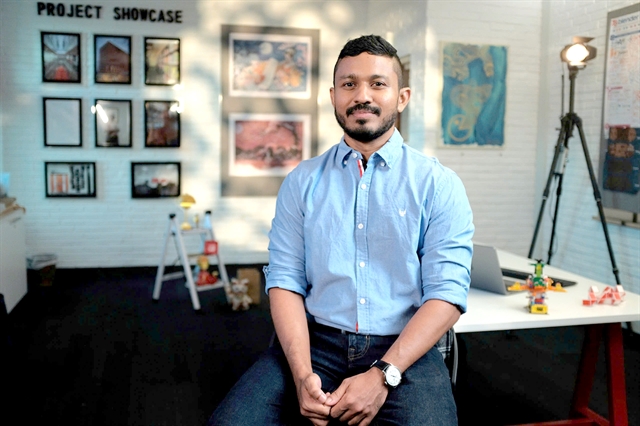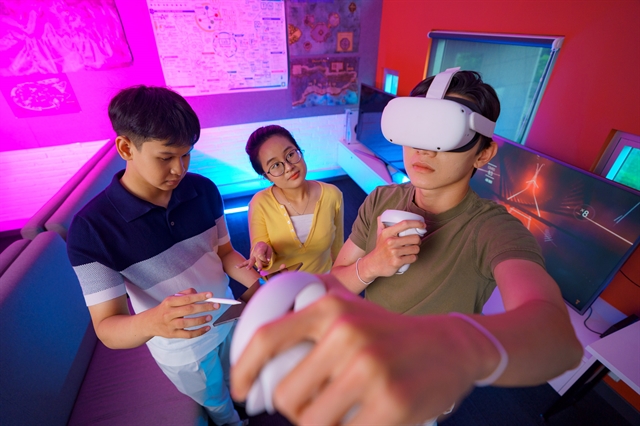 Opinion
Opinion

Việt Nam News & Law reporter Lê Hương spoke with Dr Renusha Athugala, Programme Manager, Game Design, RMIT University Việt Nam, about the recently viral game Brother Hai's Pho Restaurant and the overall gaming industry in Việt Nam.
 |
| Dr Renusha Athugala, Programme Manager, Game Design, RMIT University Việt Nam. Photos Courtesy of RMIT University |
What do you think about the game Brother Hai’s Pho Restaurant in terms of its graphics, gameplay, storyline and overall appeal and how do you perceive the Vietnamese cultural elements featured in the game?
Brother Hai’s Pho Restaurant is a great example of how a game doesn’t need high-end graphics to be memorable. Its simple, low-poly visuals and even its physics-defying, 90s-Bollywood-style cutscenes feel more charming than limiting. What really carries the experience is the gameplay and the way the story unfolds through player choices. The pacing, humour, atmosphere, and multiple endings create an emotional and engaging flow that keeps players invested.
A big part of the game’s appeal comes from how authentically it presents Vietnamese culture. The small-village setting, daily routines like making pho, chatting with neighbours, and even the interactions with a dog capture the warmth and familiarity of everyday life in Việt Nam. Beyond its traditional elements, the game reflects aspects of contemporary Vietnamese street and urban culture, as well as internet pop culture. These cultural elements are woven naturally into a deeper, mysterious narrative that gives the game surprising emotional weight.
Even players unfamiliar with Việt Nam can follow the context and enjoy the story, which is why the game resonates with both local and international audiences. Ultimately, Brother Hai’s Pho Restaurant shows that strong gameplay, cultural authenticity, and heartfelt storytelling matter far more than graphical polish.
Is it a good idea to incorporate Vietnamese cultural elements into games and how can this help promote the image of Việt Nam?
Integrating Vietnamese cultural elements into games is a powerful idea. This is what we teach our students at RMIT as well.
Games are global and culturally rich experiences that help the global audience understand Vietnam beyond the stereotypes. When we show elements such as Vietnamese food, streets, and the small corner shops with the short stools and the typical floor tiles, we share a unique identity with the world. Cultural values are also shared through short conversations between the characters. I believe that Brother Hai’s Pho Restaurant is loved so much because it is probably the first time the unseen street culture is shown to the world.
This game is a fantastic example of how local storytelling can be emotional, cinematic and compelling. By embedding culture in games, Vietnamese game designers promote Việt Nam as a country full of creativity, depth and meaningful stories worth experiencing.
 |
| RMIT game design students test a virtual reality game. |
What are your thoughts on other locally developed Vietnamese games that are currently popular on the market?
Việt Nam has produced many impressive games in recent years. Titles like Hoa, Thần Trùng (The Death), Tai Ương (The Scourge), and the upcoming XEOM: Saigon Edition, are all strong examples of Vietnamese creativity reaching global platforms like Steam.
It’s very interesting to observe that many Vietnamese-developed games have traditionally leaned toward the thriller or horror genre, often inspired by local folklore, urban legends and spiritual beliefs. These themes resonate deeply with local players while also intriguing international audiences who are curious about Southeast Asian storytelling.
What’s particularly fascinating is comparing games like Brother Hai’s Pho Restaurant and Hoa. They are completely different in both aesthetics and narrative approach. Hoa is famous for its beautiful Studio Ghibli-inspired visuals and gentle storytelling, while Brother Hai’s Pho Restaurant relies on gameplay-driven narrative with contemporary Vietnamese street and urban cultural humour. This contrast shows the diversity and growing maturity of Vietnamese game development.
We are also now seeing Vietnamese games branching out from the traditionally saturated horror genre and expanding into a wider range of styles, tones and storytelling approaches. This shift is a very positive sign, showing that the industry is evolving, experimenting and becoming more diverse.
Together, these examples demonstrate that Việt Nam is capable of producing both visually stunning titles and deeply narrative-driven indie experiences, with designers increasingly exploring new genres and creative directions.
What is your opinion on the future development of Việt Nam’s gaming industry?
I believe the future of Việt Nam’s gaming industry is promising. The country has a young, talented and highly creative generation who are passionate about games.
Not only as players but also as designers, developers, storytellers, and artists. The industry is expanding quickly, supported by a growing number of studios, indie creators and educational institutions.
At RMIT Việt Nam, our Games programme is built specifically to support this growth. We focus on all aspects of game design and development – training designers, developers, technical artists, writers and narrative designers – to ensure students graduate with the full range of skills the industry needs. This holistic approach prepares them to contribute meaningfully to Việt Nam’s rapidly developing game sector.
The global success of titles like Hoa and the viral popularity of Brother Hai’s Pho Restaurant show that Vietnamese games are starting to make a strong impression internationally.
What’s especially exciting is how local developers blend traditional cultural elements with contemporary street culture, youth humour, and modern pop culture. This gives Việt Nam a distinct creative voice that resonates with global audiences. VNS
 |
| RMIT students work in a group on a game design project. |




